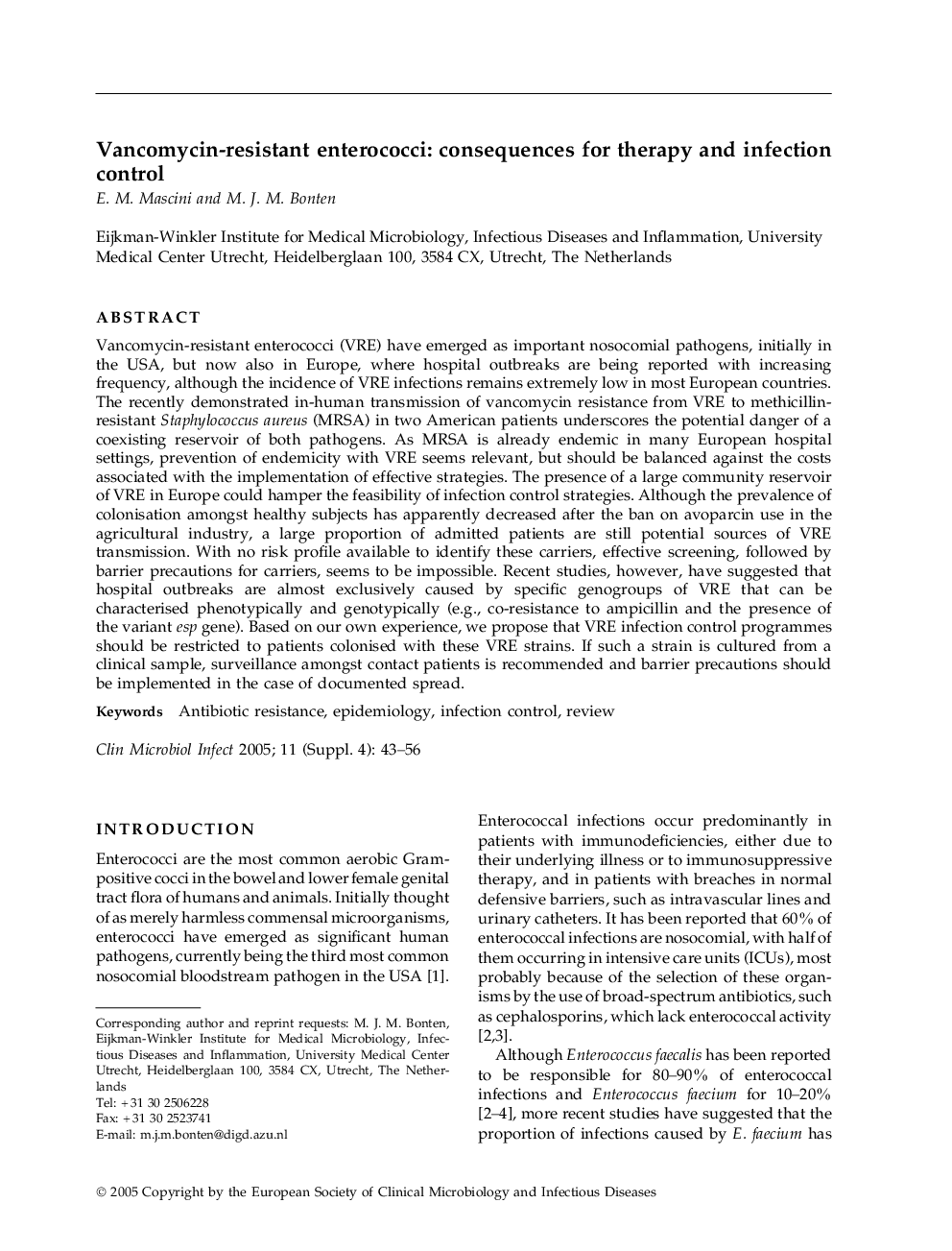| Article ID | Journal | Published Year | Pages | File Type |
|---|---|---|---|---|
| 9275544 | Clinical Microbiology and Infection | 2005 | 14 Pages |
Abstract
Vancomycin-resistant enterococci (VRE) have emerged as important nosocomial pathogens, initially in the USA, but now also in Europe, where hospital outbreaks are being reported with increasing frequency, although the incidence of VRE infections remains extremely low in most European countries. The recently demonstrated in-human transmission of vancomycin resistance from VRE to methicillin-resistant Staphylococcus aureus (MRSA) in two American patients underscores the potential danger of a coexisting reservoir of both pathogens. As MRSA is already endemic in many European hospital settings, prevention of endemicity with VRE seems relevant, but should be balanced against the costs associated with the implementation of effective strategies. The presence of a large community reservoir of VRE in Europe could hamper the feasibility of infection control strategies. Although the prevalence of colonisation amongst healthy subjects has apparently decreased after the ban on avoparcin use in the agricultural industry, a large proportion of admitted patients are still potential sources of VRE transmission. With no risk profile available to identify these carriers, effective screening, followed by barrier precautions for carriers, seems to be impossible. Recent studies, however, have suggested that hospital outbreaks are almost exclusively caused by specific genogroups of VRE that can be characterised phenotypically and genotypically (e.g., co-resistance to ampicillin and the presence of the variant esp gene). Based on our own experience, we propose that VRE infection control programmes should be restricted to patients colonised with these VRE strains. If such a strain is cultured from a clinical sample, surveillance amongst contact patients is recommended and barrier precautions should be implemented in the case of documented spread.
Related Topics
Life Sciences
Immunology and Microbiology
Microbiology
Authors
E.M. Mascini, M.J.M. Bonten,
